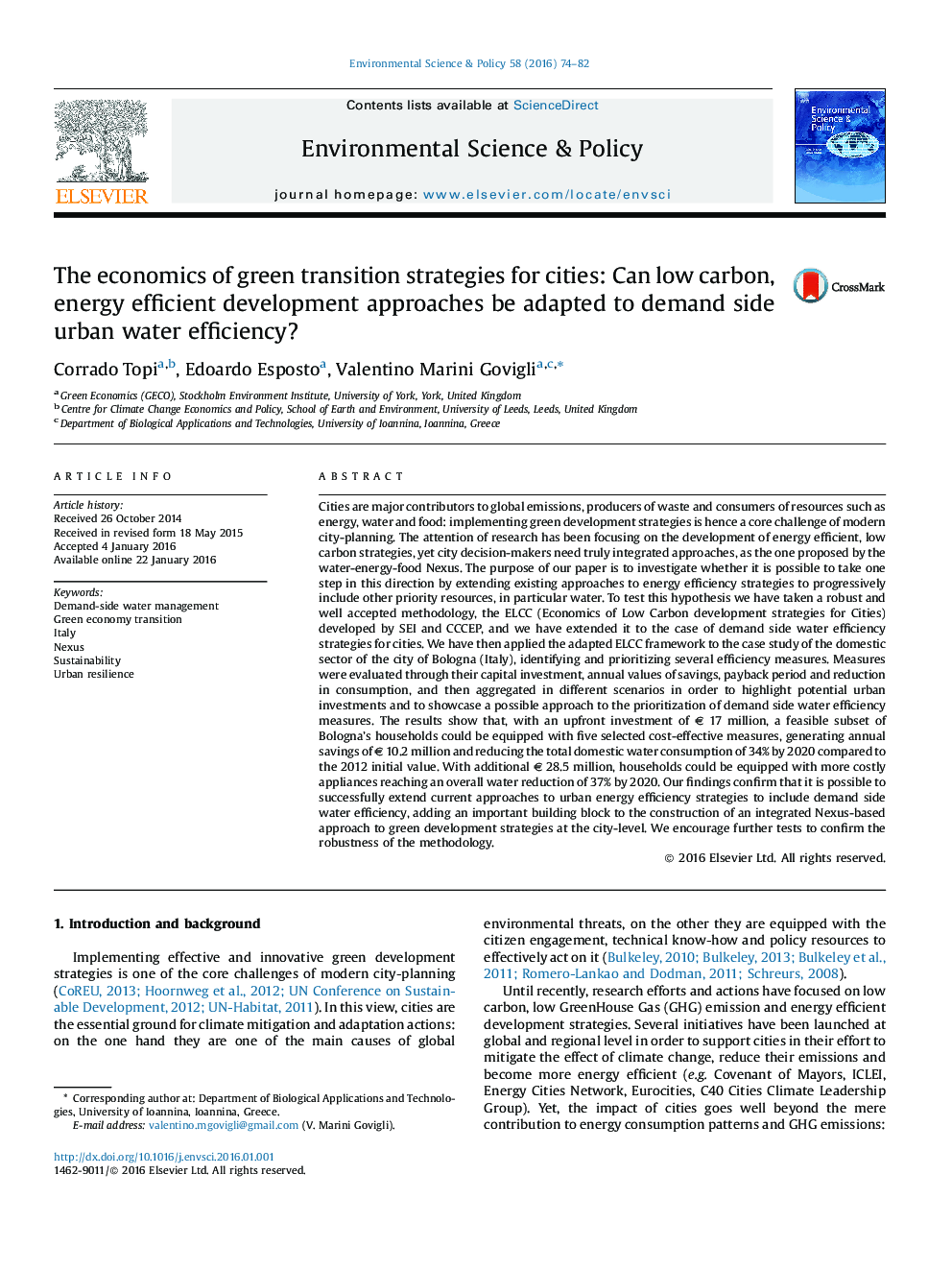| کد مقاله | کد نشریه | سال انتشار | مقاله انگلیسی | نسخه تمام متن |
|---|---|---|---|---|
| 1053455 | 1485050 | 2016 | 9 صفحه PDF | دانلود رایگان |
• We showcase a prioritization methodology for demand side water efficiency measures.
• 8 domestic measures appraised using economical and environmental indicators.
• 6 show attractive pay-back period producing € 10.2 million annual savings overall.
• Domestic water consumption could be reduced of 34% by 2020.
Cities are major contributors to global emissions, producers of waste and consumers of resources such as energy, water and food: implementing green development strategies is hence a core challenge of modern city-planning. The attention of research has been focusing on the development of energy efficient, low carbon strategies, yet city decision-makers need truly integrated approaches, as the one proposed by the water-energy-food Nexus. The purpose of our paper is to investigate whether it is possible to take one step in this direction by extending existing approaches to energy efficiency strategies to progressively include other priority resources, in particular water. To test this hypothesis we have taken a robust and well accepted methodology, the ELCC (Economics of Low Carbon development strategies for Cities) developed by SEI and CCCEP, and we have extended it to the case of demand side water efficiency strategies for cities. We have then applied the adapted ELCC framework to the case study of the domestic sector of the city of Bologna (Italy), identifying and prioritizing several efficiency measures. Measures were evaluated through their capital investment, annual values of savings, payback period and reduction in consumption, and then aggregated in different scenarios in order to highlight potential urban investments and to showcase a possible approach to the prioritization of demand side water efficiency measures. The results show that, with an upfront investment of € 17 million, a feasible subset of Bologna’s households could be equipped with five selected cost-effective measures, generating annual savings of € 10.2 million and reducing the total domestic water consumption of 34% by 2020 compared to the 2012 initial value. With additional € 28.5 million, households could be equipped with more costly appliances reaching an overall water reduction of 37% by 2020. Our findings confirm that it is possible to successfully extend current approaches to urban energy efficiency strategies to include demand side water efficiency, adding an important building block to the construction of an integrated Nexus-based approach to green development strategies at the city-level. We encourage further tests to confirm the robustness of the methodology.
Journal: Environmental Science & Policy - Volume 58, April 2016, Pages 74–82
